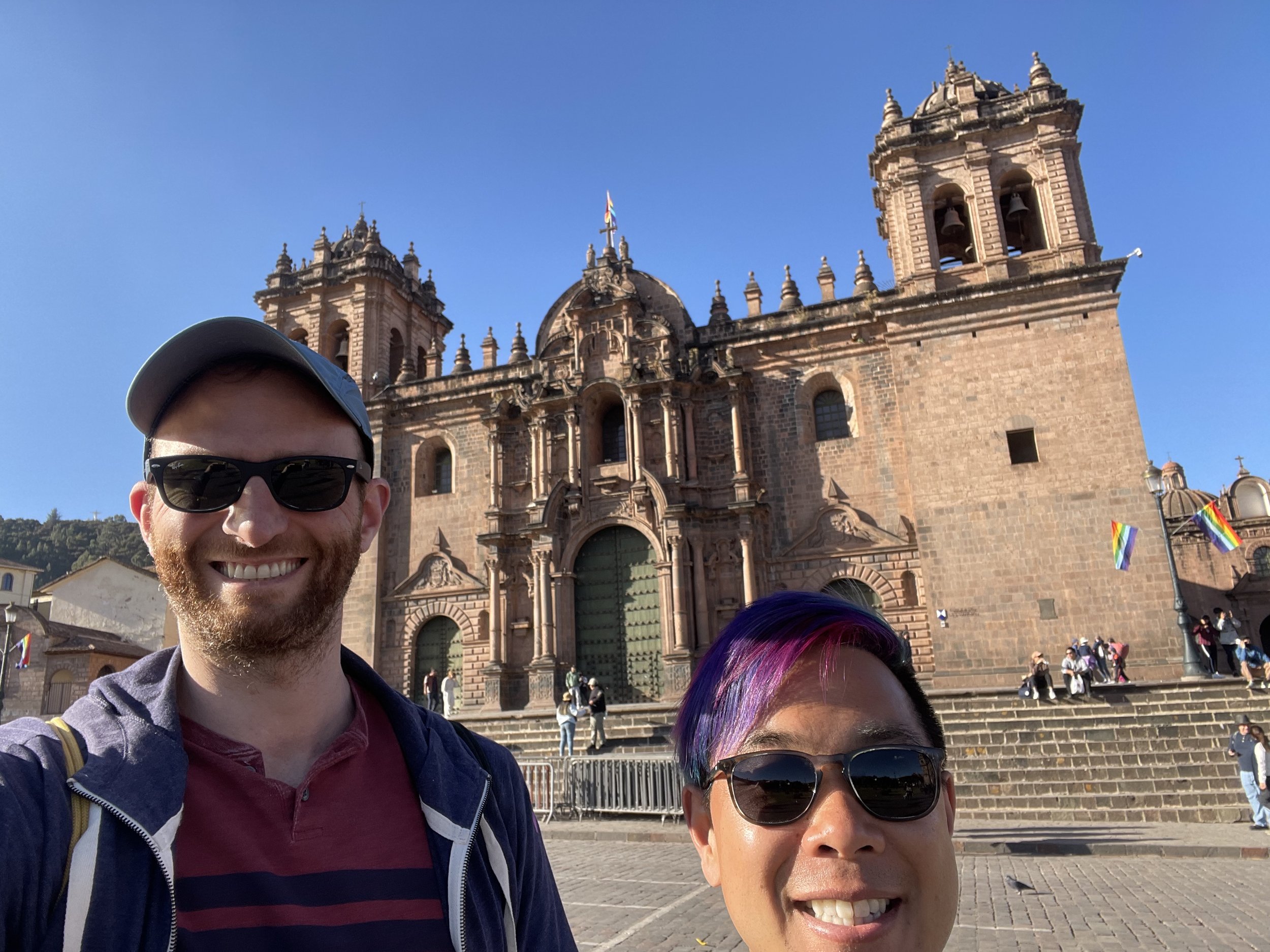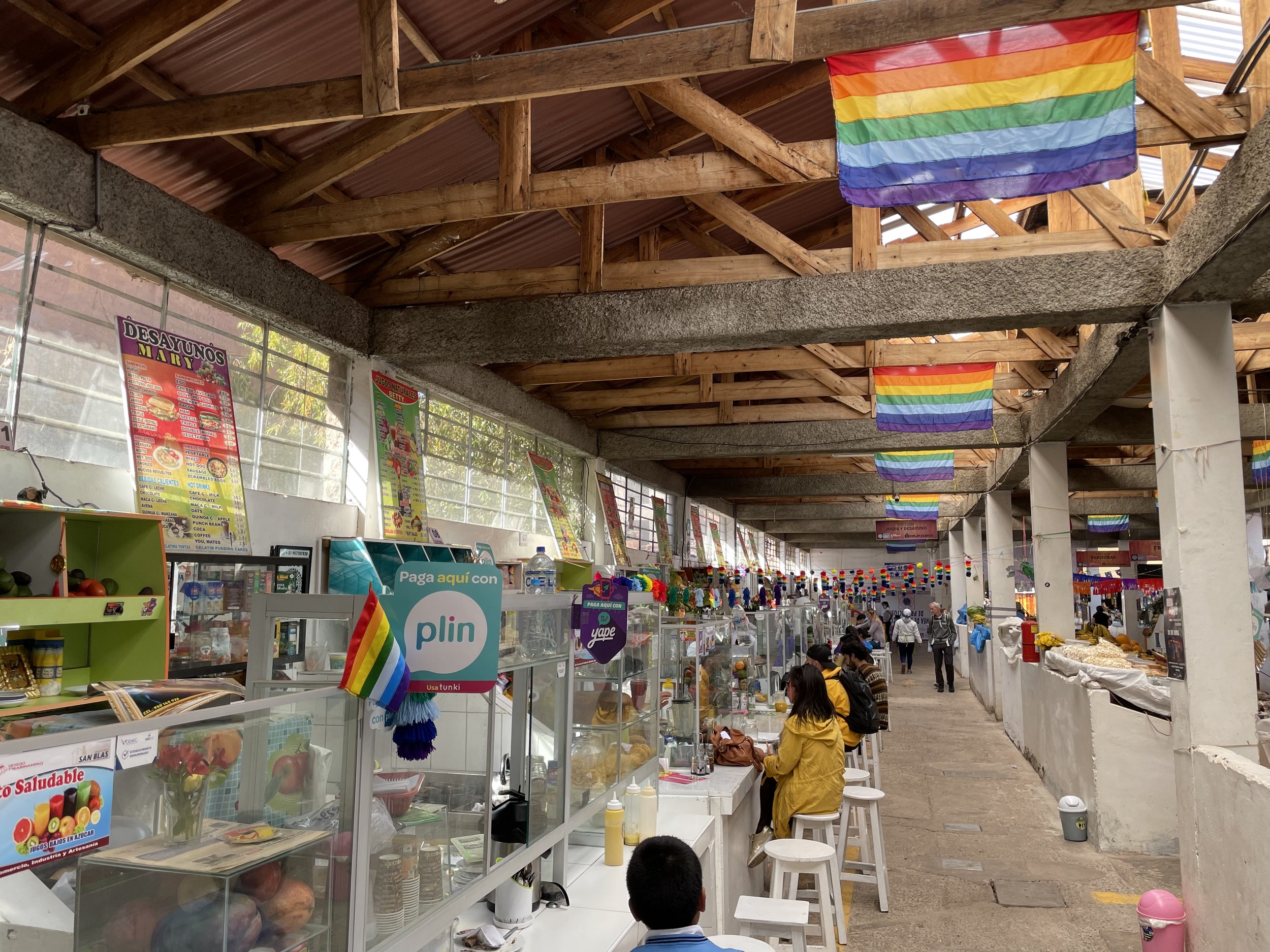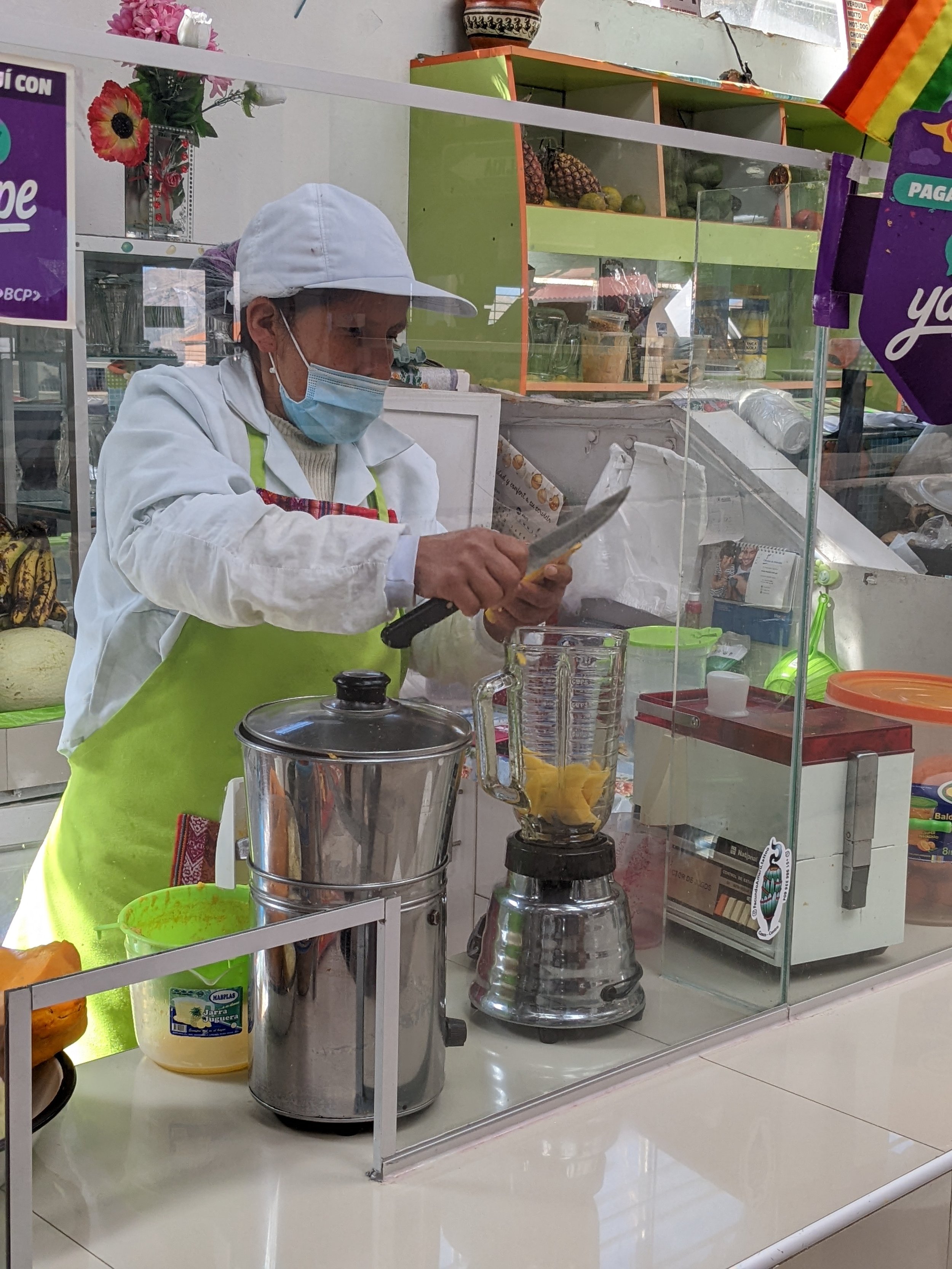Cusco
A few days ago, we spent an amazing weekend in New Hampshire for a reunion for Nick’s dad’s side of the family. It was great to see so many members of the White family, especially ones whom we haven’t seen in many years. We loved spending time with everyone, and generally catching up on what’s been going on with everyone’s lives. We hope it won’t be another decade before we see everyone again.
While we were excited for the reunion, we were probably more excited for the second part of our trip: Peru! We had to leave fairly early Sunday morning to drive from NH to Boston Logan airport, but we had Nick’s cousin Jon with us, who also had a flight out that day, to keep us company. We had a 1 hour layover in Miami, but fortunately for us, our flight arrived early, so the connection ended up not being much of an issue. And then after just over 5 hours in the air, we landed in Lima at 10:15pm. Since we had a 9am flight the next morning to Cusco, we stayed at the Wyndham airport that’s literally across the street from the airport. I was able to get a photo of this Welcome to Peru sign before going to sleep:
The next morning, we walked back across the street to board our roughly one hour flight to Cusco. While in the air, we had an amazing view of the Andes:
Cusco’s around 11000 feet above sea level, so the air is really thin. We immediately felt it when disembarking the plane and walking up a ramp to get to the airport. Masks are mandatory in Peruvian airports, and in all enclosed spaces, so within a couple of minutes, both Nick and I were breathing heavily. We started to get a bit more acclimated to it, but it did hit us frequently throughout the day, especially during the climbing of stairs, of which there are many in Cusco.
We hired a driver to drive us to the hotel, but we arrived too early so our room wasn’t ready. We took this opportunity to leave our luggage and backpacks with the hotel to venture off into the city. Our first stop was Coricancha, which was conveniently located across the street from our hotel. In Quechua, the name means ‘the golden temple’ because the Inca decorated the walls with gold, but during the Spanish conquest in the 16th Century, the gold was stolen during the raids so none of it remains. Coricancha is considered one of the most important temples in the Inca Empire. As the capital of Cusco, it was located in the center of the empire, similar to the center of a wheel because multiple roads led out from it in all directions.
One of the most amazing features of Coricancha is the construction of the walls. The Inca were so skilled at cutting the stones to form the walls, they didn’t need any grout to keep the stones together, like we currently do now when building anything with bricks. Everything was perfectly shaped to fit with adjoining stones with no gaps. You can still see evidence of this everywhere:
I don’t remember where we heard this, but apparently when the Spanish destroyed part of the temple to raid the gold, they rebuilt parts of it. However, they were not as good as the Inca, and you could tell this because those parts of the walls look much worse, and in some places, they were next to each other to provide the best contrast of the architectural skill:
We continued to walk around outside, which is now a large grassy field, but it could have been used for farmland or gatherings. Upstairs, there was a small art exhibit with some interesting pieces:
And in another room was what appeared to be an ornately decorated chapel. I can’t really remember what was going on here, all I can remember were the creepy mannequins that were used to set the scene:
I’m pretty sure we could have figured out what each area was used for without being visually traumatized.
Further in, we bought tickets to climb the bell tower that goes to the highest point of the temple. Unfortunately for Nick, this meant navigating some narrow stairs and very short doors:
But our reward at the top was a wonderful view of Cusco in all directions:
We descended the bell tower without any injuries to our heads, and decided we needed lunch so we wandered around and found a cute little place called Makipura. Basically, it had beer and Lomo Saltado, so we were sold. We actually ordered their ceviche and a Peruvian combo plate. It was pretty good, but a bit salty, yet it satisfied our hunger so mission accomplished.
After lunch, we continued our ascent to an area called San Blas. What we enjoyed on our random meandering of the city is that there are many cute little plazas everywhere. In San Blas, we came across this one that had a large water feature:
And then we looked at the stores around the plaza and saw this cute little art cafe called Xapiri Ground. Nick wanted a little more coffee, so we went inside and it was wonderful. The cafe has a small gallery of art from the indigenous people in the Amazon, and their coffee and chocolate come from the Amazon, and their goal is to help support the ecosystem of that area. We ordered a hot chocolate, and while it was being made, we checked out some of the art, and generally enjoyed the open space they had:
After a bit of debate, we decided to skip the Mirador de San Blas, primarily due to the fact that it was a climb, and we were not in the mood to be out of breath…again…
So we decided to go to the Mercado de San Blas, which is known to have many vendors selling fruit that they will juice for you on the spot.
When we entered, we also discovered various little food stalls like a falafel stall, vegan stall, and others, so this could be a fun lunch spot. For us, all I saw was the various fresh fruit, and I wanted some juice, so we walked up to a stall and asked for a mango juice. The woman at the stall started cutting up some mango that she presumably sourced from one of the fruit vendors in front of her, and blended it with some orange juice:
However, she used the sink to wash her blender and added water from a pitcher to the blender. One of the warnings that we read from multiple sources is to avoid the tap water, and I’m about to drink some of it in this juice:
The juice was amazing, but I’ll have to see if I’m going to be regretting this choice…
We continued our way down back to the hotel to see if our room was ready yet, and we found another small plaza:
As I said earlier, they’re everywhere, but they make for some cool sitting spaces when you need them.
When we got back to the hotel, our room was ready, so Walter, the bell boy, came over to show us around the hotel, the Palacio Del Inka. They had complimentary coca tea, which is tea made from leaves that can be refined to make cocaine. But the tea version isn’t as…energizing, which is a good thing. However, we were warned not to drink it after 6pm because it does contain caffeine, so it’ll prevent us from going to sleep.
At 5pm, they have a daily tour of the church that is somewhere in the hotel. We were going to miss this because we had plans to see some sights in the city, but it was good to know about. And finally, Walter told us about the 6pm complimentary Pisco Sour lessons at the bar, and Nick was definitely not going to miss this. So after being shown to our room, we quickly changed to some more comfortable walking clothing, and left to go to the Plaza de Armas.
It’s the central plaza of Cusco that was built by the Inca, and is still used now as a main hub of gathering and outdoor entertainment. It’s surrounded by a few churches, but we didn’t have time to go into any of them. Their exteriors were cool, and some of them had some statuary depicting some biblical events:
Because we hadn’t tortured our lungs enough, we decided to head uphill again to see an old Spanish aqueduct. However, when we got there, we learned that it had originally been the site of an Inca temple celebrating the spring water. The Incas used this water to irrigate corn and to provide for the city. The Spanish tore down the temple and reused the blocks for the aqueduct and other purposes.
(Also pictured: some of the walk up and back.)
For our last little excursion, we headed back down hill to the museum of precolombian art. It had amazingly well preserved ceramics, silver, and gold artifacts as well as ample explanations of the history of various peoples who lived in ancient Peru.
We finally headed back to our hotel to freshen up, and Nick wanted to take advantage of the free Pisco sour “lesson” the hotel offered. Our bartender, Darwin (yes, named after Charles, he stated up front), was entertaining as he taught all about pisco itself and the cocktail.
In the end, there was a quiz and the winner got Darwin’s hand-made pisco sour while everyone else got tasters made by Miguel. Nick won the quiz (a true nerd for anything alcoholic).
We had dinner at a nearby restaurant before going to bed. The next morning, we were headed to Poroy train station to start our trip to Machu Picchu!
























































